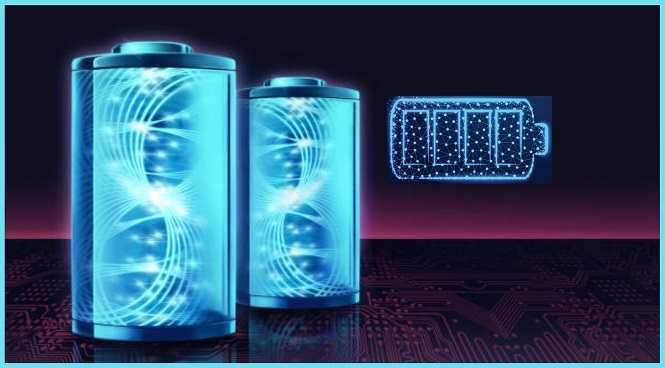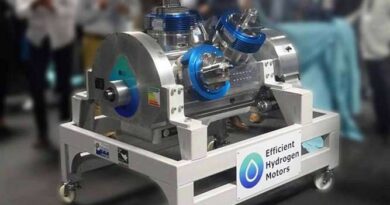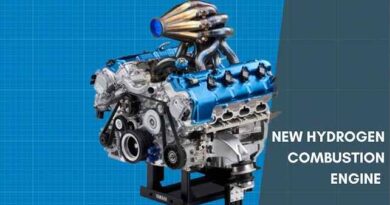The Future of high energy density batteries
The Future of high energy density batteries
Scientists are looking at the molecules inside batteries. Because they’re trying to make the perfect battery. In the 21st century, probably the most important technological revolution we need is a better battery.
Imagine batteries that can hold enough energy to power an airplane, large enough to back up the power grid, or reliable enough for your Bat communicator compounded.

The batteries are dead. That is going to become the way we think about the world, where batteries are sitting everywhere, powering all sorts of devices.
Argon is the leading lab in the world when it comes to discovering a better battery. So we came to Argonne National Laboratory to see how they’re building the next generation of batteries.
That is Hard Reset, a series about rebuilding our world from scratch. Now let’s see if we can get it. I don’t think we had the budget to paint you out.
The Technology
Like most Americans, I learned all about batteries from the award-winning science program Breaking Bad. A battery is a galvanic cell, with no more than an anode and a cathode separated by an electrolyte.
Batteries use chemicals to store energy in the form of electricity, which is a new thing for us. For the last 100 years, humanity released energy by setting things on fire.
We’ve been generating energy by burning some sort of fossil fuel, say, in a vehicle, so that we can drive around. If you look to the future, there’s going to be a whole other way.
We think about how we generate electricity, and then we’re going to be storing them inside this box. That’s called a battery.
This is Dr Venkat Serena Vasan. He leads the team here at Argon, taking batteries to the next level so that we can build a future that doesn’t rely so much on setting things on fire.
Can we find materials that will make batteries as good at storing energy as fossil fuels?
We’re going all electric. so batteries today have come a long way because of the improvements in one particular battery technology, the lithium-ion battery.
Today they’ve reached a stage where we can imagine electric cars going 300 and 5400 miles, cell phones lasting 24 hours, and storing electricity in our homes, and we can do this all at a reasonable cost.
So lithium-ion is the gold standard for where we are with battery technology today. Even though lithium-ion batteries have made it so you don’t have to carry around a bunch of AAA batteries to keep your Sega game gear going, there’s still progress to be made.
Battery technology is at a point where there are a lot of exciting things to work on. Solid sheet batteries, I think, are one of the most important topics that I’m super excited about, I think the future of batteries.
We have to remove the flammable liquids so the batteries are going to get safer.
It’s also going to enable the use of lithium metal which can go to higher energy density and decrease the cost of these batteries.
Solid-state batteries could have two to three times the energy density of the lithium-ion batteries we know today, and maybe even more with new materials that could open the door to things like electric flight.
So there’s going to be a whole era of innovation that’s going to come on the vehicle side because we have a new energy source that we can take advantage of.
Batteries can help us replace fossil fuels, which would be nice, but would we just be trading dependence on petroleum for dependence on lithium?
It’s getting awfully hard to find good lithium sources these days. We have to start thinking about how are we moving away from lithium.
In a lithium-ion battery, lithium is acting as an electrolyte, moving electrons back and forth between the cathode and the anode.
Other elements can do the same trick, and some of them might even be better at it. Lithium has a charge of plus one, but some elements have a charge of plus two or plus three.
So things like magnesium, calcium, zinc, and aluminum allow us to have more electrons for the same weight and volume of ion that it’s carrying.
In theory, batteries with these new chemistries could hold two to three times as much as lithium-ion batteries.
That means you could double or triple the range of something like an EV or electric airplane. This chemistry is very hard. There are many challenges.
If we can solve those challenges, we can make a significant impact on energy density and move away from the kitchen.
These technologies are not within our grasp yet. They’re close, though. Tantalizingly close, like a candy bar stuck under your car seat.
We can almost reach them. But to get there, we’ll need to use the most powerful tools on Earth.
The Difference
Lots of people are working to develop new kinds of batteries, but Argon is the only place where they do it at the speed of light.
I think they are doing some crazy stuff at Star labs. The last time I checked, it used to be that the way we found battery materials was what I call the cook-and-look approach.
You cook something up, and then you go look and see if it worked. A single Ph.D. student may spend five years studying one or two materials. That’s all they used to do.
Today, on a computer, we can book tens of thousands of these things in a year.
Part of the work that I’m doing is to optimize known materials and even molecules that haven’t been synthesized experimentally to design even better materials.
Materials that are identified by the computers are built and tested onsite at Argonne here in the Dry lab. They keep it super dry in here so that the lithium doesn’t catch fire and explode.
It’ll be fine. Anyway, one of these handcrafted artisanal batteries might be what replaces the battery in your phone or car if they can find a better combination of chemicals to use inside.
The way we find out how they behave is by making small batteries. But we also bring them to facilities at Ardon, like the Advanced Photon Source, which is why we’re sitting here today.
The advanced photon source is a giant particle accelerator. As opposed to the Basic Photon Source, which is just a flashlight here.
They speed electrons up to 99, 99, and 99%. The speed of light is real, really fast. If it looks familiar to you, it’s probably because they filmed the 1996 Keanu Reeves film chain Reaction here.
That makes Venkat the Keanu Reeves of this whole operation. Correct.
Anyway, what were we talking about? Advanced Photon Source allows us to shine a light on a battery during its operation to understand what is happening on the inside.
That is a giant feedback loop. The simulations help create a new kind of battery.
The Particle Accelerator looks deep inside to see how accurate the simulation was.
The data from the particle Accelerator makes a better model for future simulations so we can make even better batteries.
You can see where this is headed. Eventually, these computer models will be able to invent batteries we can’t even imagine yet. And that’s where things get fun.
The Future
So picture a scenario where we had ubiquitous energy storage between solar, wind, and nuclear. We can generate all the electricity we’d ever need without burning fossil fuels.
Better battery technology means we can capture and store all that energy for a much more reliable supply of clean electricity.
So I think in the next 10, 20, 30 years, there’s going to be a future that is going to look very different from the past.
If we had a blank sheet today and we redesigned the whole electric grid, we would do it very differently than the way we have the grid today. Solar generation is now cheaper than fossil fuel generation.
We can start to imagine every home having a solar panel along with a battery pack to ensure that there is stability.
If that happens, we can remove carbon emissions from the grid sector, and that’s going to be an exciting feature for us to see.
We could also potentially travel on land or in the air without burning fossil fuels in this country.
Over two-thirds of the energy consumption is used for transportation and generating electricity.
For the electricity grid, we need to fundamentally change the way we use energy so that we can reduce emissions.
I think this decade is going to be a hard reset for us to see whether we can make those changes.
I think battery technology is going to be the absolute key to making those changes happen.



